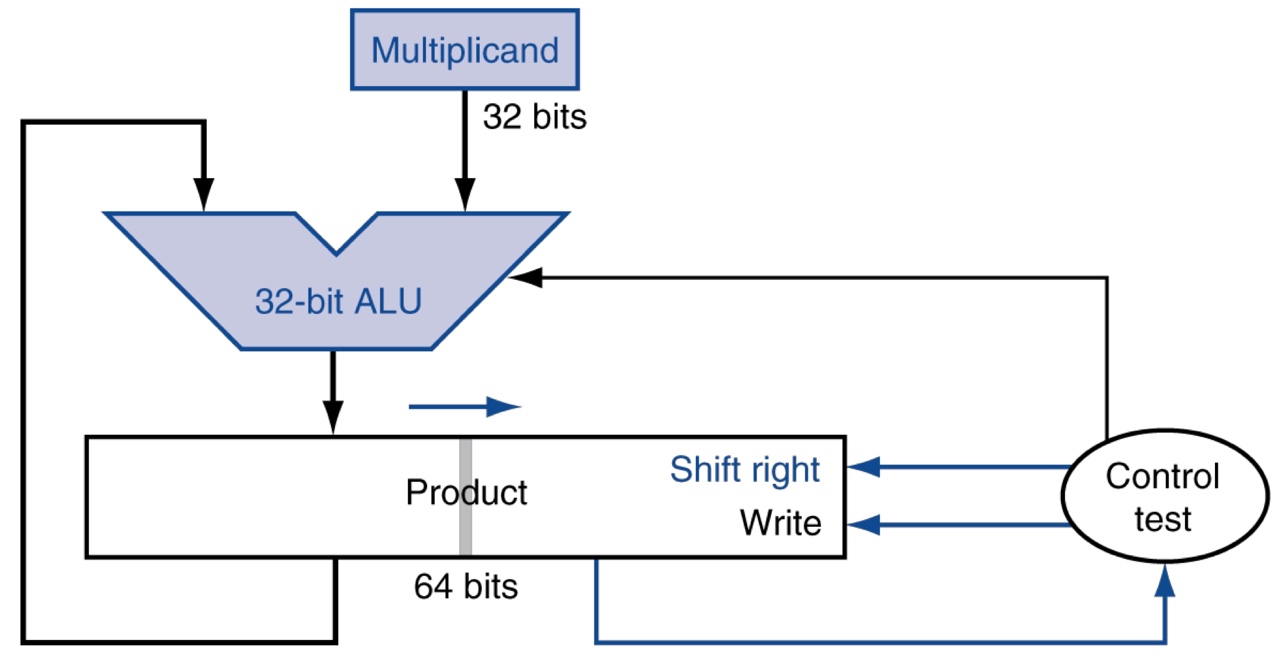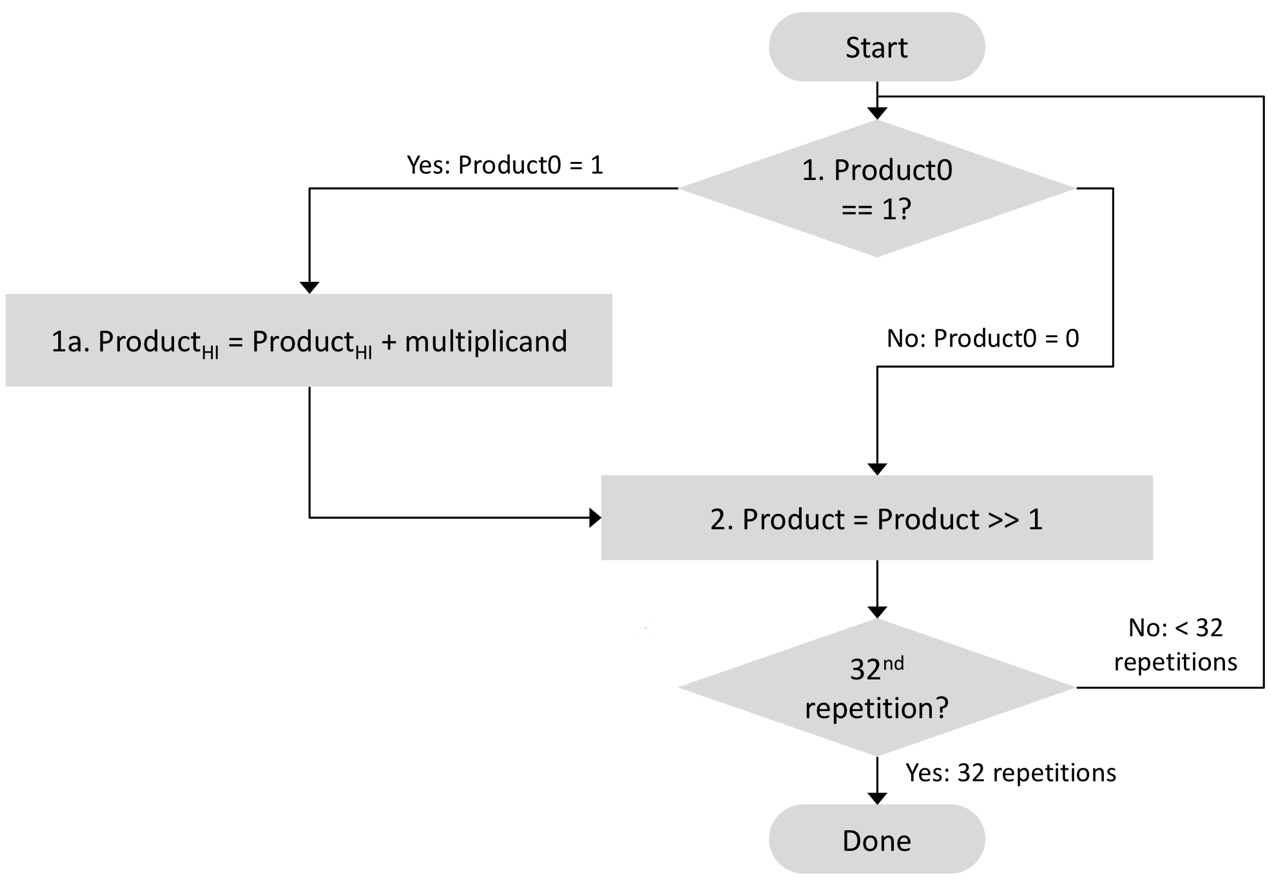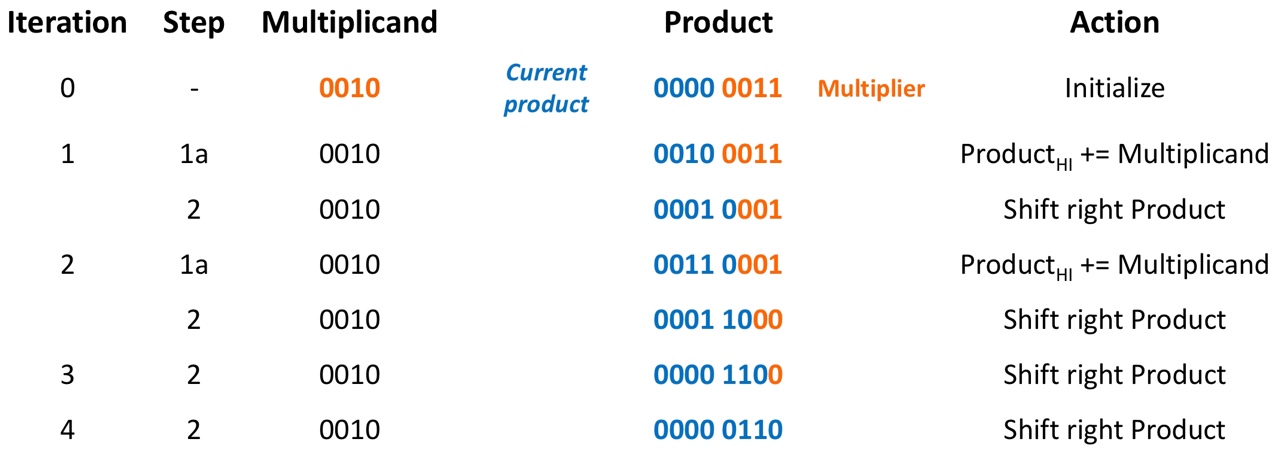contents: 0-1. CA Intro
Multiplication
If a multiplicand and a multiplier have m and n digits, the product has at most m + n digits
-
MIPS-based computers use 32-bit word for the arithmetic operations
-
The product in MIPS-based computers has at most 64 digits
Optimized version of the multiplication HW
-
32-bit multiplicand register / ALU
-
64-bit product register (multiplier shares a register with product)
- HI: most significant 32 bits
- LO: least significant 32 bits
- Actually, there is one more bit in the left of the product register to hold the carry out of the adder

Settings
-
0 is stored in the left half of the product register
-
The multiplier value is loaded into the right half of the product register
-
The multiplicand value is loaded into the multiplicand register
Multiplication Algorithm

Example
When N = 4 (4-bit ALU / multiplicand, 8-bit product),
- should be repeated as many bits as it is

Signed multiplication
Do multiplication after converting both multiplicand & multiplier to positives
-
For 31 iterations (except a sign bit)
-
After the multiplication, negate the result (if it is required)
Better solution: Booth's Algorithm
-
Supports multiplication of two's complement signed numbers in a more efficient way
-
Requires almost same hardware with the multiplication of unsigned numbers
Instructions
mult rs, rt / multu rs, rt(rs: multiplicand, rt: multiplier)
- The result (product) is stored in HI / LO

mfhi rd / mflo rd
- Move from HI / LO to rd

Example: mult $t0, $ t1
-
$t0(multiplicand) is used as the Multiplicand register -
Initially, the value in
$t1(multiplier) is loaded intoLOregister -
Then, do the multiplication and store the 64-bit product to
HIandLOregisters